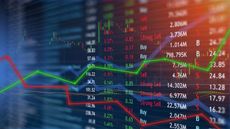Why You Should Invest in Commodities
These portfolio diversifiers are in a long-term uptrend.


Most investors have probably never fretted about how to add a nice stake in pork bellies or winter wheat to their portfolio. But many have lined up in Costco to buy a gold bar. All such investments are part of the broad asset class of commodities, along with crude oil, coffee, copper and more. Despite impressive run-ups in many commodities this year, some strategists say they’ve still got a long, upward run ahead of them and deserve a spot in your portfolio.
That’s because commodity prices tend to ebb and flow in long cycles, largely governed by human nature, says John LaForge, head of real asset strategy at Wells Fargo Investment Institute. Commodity producers ramp up production when prices are rising, until eventually markets are saturated, or at least so well stocked that profits start to suffer. “It gets to a point where producers aren’t interested in planting an extra acre of corn or producing an extra barrel of oil,” says LaForge.
Producers then scale back until all that excess supply is worked off. With commodities once more in short supply, prices start to rise again and the cycle repeats. These bull and bear cycles tend to last roughly 10 to 15 years, on average, says LaForge. Currently, “we’re in year four of a bull super cycle” that began in March 2020, he says.

Sign up for Kiplinger’s Free E-Newsletters
Profit and prosper with the best of expert advice on investing, taxes, retirement, personal finance and more - straight to your e-mail.
Profit and prosper with the best of expert advice - straight to your e-mail.
"Very positive" outlook for commodities
Shorter-term developments also affect the price of commodities — harsh weather, supply-chain snafus, geopolitical tensions or spikes in inflation, for example — which is why, within a super cycle’s long-term trend, commodities can be volatile.
Jim Masturzo, chief investment officer of multi-asset strategies at money management firm Research Affiliates, sees several factors pointing to a “very positive” outlook for commodities. They include robust growth in commodity-intensive areas of the economy such as green energy and artificial intelligence, higher-for-longer U.S. inflation, and expectations for an eventual weakening of the dollar. (Commodities, generally priced in dollars, typically move in the opposite direction of the greenback.)
Commodities can be effective portfolio diversifiers. “Commodities offer diversification from regular stocks and bonds,” Masturzo says. “A perfect example is 2022 — every major asset class was negative as inflation was rising, except commodities.”
How to own commodities

Outside of gold, it’s almost impossible to invest in commodities directly. Most of the time, you’re investing in derivative instruments, such as futures contracts, that track the price of a commodity (sometimes more closely than other times). Or you can invest in stocks linked to commodities.
There are pluses and minuses to each approach depending on a number of variables. How much to allocate to commodities overall depends on your risk tolerance, but you’ll likely need 5% to 10% to realize the diversification benefits, strategists say.
Gold shines brightly among commodities lately. “We’ve been broadly bullish on commodities for some time, especially on precious metals,” says Mayukh Poddar, senior portfolio manager at Altfest Personal Wealth Management. Geopolitical tensions and ongoing inflation angst are positives, and gold is getting a boost from foreign governments increasingly deploying excess reserves into gold, he says.
“Generally speaking, we prefer the metal; the stocks of miners are more volatile,” Poddar says, although the firm invests some in the latter, which are well priced now. Exchange-traded funds are good choices. Poddar prefers low-cost SPDR Gold MiniShares (GLDM, $46), backed by physical bullion. For a broader basket of precious metals, he likes abrdn Physical Precious Metals Basket Shares (GLTR, $104), offering exposure to gold, silver, platinum and palladium. (Prices, returns and other data are as of May 31, unless otherwise noted.)
Long-term investors shouldn’t be put off by gold’s huge gain. The metal rallied from roughly $1,820 an ounce last October to around $2,325 recently, down from an all-time high in May of $2,435. “That’s not extreme, particularly in a bull super cycle,” says LaForge. A pause to consolidate gains shouldn’t be surprising, he says. But LaForge sees gold trading at more than $2,500 per ounce in 2025.
Gold-mining stocks have conspicuously lagged the metal’s blockbuster rally, making them compelling now for tactical investors who can stomach their volatility. “Gold stocks seem to be stuck in neutral, which is uncharacteristic — they typically outperform the metal in a bull phase,” says John Hathaway, senior portfolio manager at Sprott Asset Management, an investment firm specializing in precious metals. Intrepid investors seeking exposure to mining stocks can consider VanEck Gold Miners (GDX, $35), an ETF whose top three holdings are Newmont (NEM), Agnico Eagle Mines (AEM) and Barrick Gold (GOLD).
Crude oil has been on more of a roller coaster. Having briefly traded below $0 in 2020 when COVID decimated demand, oil rebounded to over $120 a barrel in 2022 as Russia’s invasion of Ukraine upended supplies and has now fallen back to below $80 a barrel. LaForge sees modest gains, to $85 a barrel, in 2025. “Oil needed to cool down a bit,” he says. “Even in bull cycles, prices don’t skyrocket higher every year.”
In contrast to their gold strategy, when it comes to energy, the portfolio managers at Altfest prefer stocks to the commodity itself. (Strategists at Wells Fargo also recommend that stock investors overweight the sector in their portfolios.) If oil stays within a stable range, says Altfest’s Poddar, energy producers and related firms should earn reasonable profits. He finds attractive valuations among the integrated giants, including ExxonMobil (XOM) and Chevron (CVX), which are the top holdings in Energy Select Sector SPDR (XLE, $93).
But before you zero in on one particular commodity, consider whether a broader approach may suit you better. Although some parts of the commodities complex might be more attractive than others at any given time, investors need not stress over picking the standouts.
“A broad basket is best,” says LaForge. The reason, he says, is that in a bullish super cycle, a rising tide tends to lift all boats — about 90% of commodities move in the same direction in a super cycle, whether bull or bear, he notes. “If investors try to get too cute and pick that one commodity, it could be the one of 10 that doesn’t participate.”
A broad ETF worth exploring, according to Poddar, is Invesco Optimum Yield Diversified Commodity Strategy No K-1 (PDBC, $14). The actively managed ETF invests across energy precious metals, industrial metals and agriculture sectors. As its name implies, does not issue pesky K-1 forms at tax time.
Note: This item first appeared in Kiplinger Personal Finance Magazine, a monthly, trustworthy source of advice and guidance. Subscribe to help you make more money and keep more of the money you make here.
Related content
Get Kiplinger Today newsletter — free
Profit and prosper with the best of Kiplinger's advice on investing, taxes, retirement, personal finance and much more. Delivered daily. Enter your email in the box and click Sign Me Up.

Anne Kates Smith brings Wall Street to Main Street, with decades of experience covering investments and personal finance for real people trying to navigate fast-changing markets, preserve financial security or plan for the future. She oversees the magazine's investing coverage, authors Kiplinger’s biannual stock-market outlooks and writes the "Your Mind and Your Money" column, a take on behavioral finance and how investors can get out of their own way. Smith began her journalism career as a writer and columnist for USA Today. Prior to joining Kiplinger, she was a senior editor at U.S. News & World Report and a contributing columnist for TheStreet. Smith is a graduate of St. John's College in Annapolis, Md., the third-oldest college in America.
-
 Why Your Investments Must Change as You Age — and How to Do It
Why Your Investments Must Change as You Age — and How to Do ItAs you age, how you invest your retirement portfolio should change, balancing growth and income.
By Simon Constable Published
-
 Check Off These Four Financial Tasks to Finish 2024 Strong
Check Off These Four Financial Tasks to Finish 2024 StrongThe new year is a popular time to set financial goals, but now is the ideal time to check how you're doing. Four tweaks could make a big difference.
By Daniel Razvi, Esquire Published
-
 Why Your Investments Must Change as You Age — and How to Do It
Why Your Investments Must Change as You Age — and How to Do ItAs you age, how you invest your retirement portfolio should change, balancing growth and income.
By Simon Constable Published
-
 Stock Market Today: Stocks Tumble After Spectacular Global Internet Crash
Stock Market Today: Stocks Tumble After Spectacular Global Internet CrashMarket participants rushed out of risk assets to end a wild week of trading.
By Dan Burrows Published
-
 Stock Market Today: Dow Sinks 533 Points as Big Banks, Mega Caps Slump
Stock Market Today: Dow Sinks 533 Points as Big Banks, Mega Caps SlumpGoldman Sachs and Apple were two of the worst-performing blue chip stocks on Thursday.
By Karee Venema Published
-
 Paris Olympics: 5 Sports-Related Stocks Going for Gold
Paris Olympics: 5 Sports-Related Stocks Going for GoldTactical investors may want to keep an eye on these sports-related stocks as the countdown to the Paris Olympics begins.
By Jeff Reeves Published
-
 Stock Market Today: Semis Get Slammed and Blue Chips Bounce
Stock Market Today: Semis Get Slammed and Blue Chips BounceThe potential for more curbs on tech sales to China set off a rotation into blue chips.
By Dan Burrows Published
-
 Why Amazon Stock Is the Biggest Bargain After Amazon Prime Day
Why Amazon Stock Is the Biggest Bargain After Amazon Prime DayAmazon Amazon is Wall Street's top Dow stock and it's cheap, analysts say.
By Dan Burrows Last updated
-
 Stock Market Today: Dow Spikes 742 Points After UnitedHealth Earnings
Stock Market Today: Dow Spikes 742 Points After UnitedHealth EarningsThe S&P 500 and Nasdaq also scored wins Tuesday albeit with much smaller gains than the blue chip Dow.
By Karee Venema Published
-
 Is UnitedHealth Group Stock a Buy After Earnings?
Is UnitedHealth Group Stock a Buy After Earnings?UnitedHealth Group stock is higher Tuesday after the insurance giant beat expectations for its second quarter. Here's what you need to know.
By Joey Solitro Published